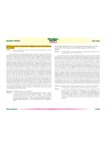Por favor, use este identificador para citar o enlazar este ítem:
http://www.alice.cnptia.embrapa.br/alice/handle/doc/1071141Registro completo de metadatos
| Campo DC | Valor | Lengua/Idioma |
|---|---|---|
| dc.contributor.author | LANZA, T. R. | pt_BR |
| dc.contributor.author | MING, L. C. | pt_BR |
| dc.contributor.author | HAVERROTH, M. | pt_BR |
| dc.contributor.author | FERREIRA, A. B. | pt_BR |
| dc.date.accessioned | 2017-06-20T11:11:11Z | pt_BR |
| dc.date.available | 2017-06-20T11:11:11Z | pt_BR |
| dc.date.created | 2017-06-20 | pt_BR |
| dc.date.issued | 2017 | pt_BR |
| dc.identifier.citation | In: ANNUAL MEETING OF THE SOCIETY FOR ECONOMIC BOTANY, 58., 2017, Bragança. Living in a global world: local knowledge and sustainability: book of abstracts. Bragança: Instituto Politécnico de Bragança: Centro de Investigação de Montanha: Society for Economic Botany, 2017. | pt_BR |
| dc.identifier.uri | http://www.alice.cnptia.embrapa.br/alice/handle/doc/1071141 | pt_BR |
| dc.description | Research suggests that the traditional native orchards materialize a highly complex productive system, which requires a wide input of local agricultural knowledge and practices for its maintenance. In addition, many plant resources depend directly on human management in these agroecosystems to persist. In this sense, this study has as main objective to provide the valorization and the preservation of this knowledge on the forms of use and management of the plants that have been, over time, accumulated, selected and used by countless generations. | pt_BR |
| dc.language.iso | eng | eng |
| dc.rights | openAccess | eng |
| dc.subject | Yuca | pt_BR |
| dc.subject | Conhecimento tradicional | pt_BR |
| dc.subject | Terra Indígena Kaxinawá de Nova Olinda (TIKNO) | pt_BR |
| dc.subject | Feijó (AC) | pt_BR |
| dc.subject | Acre | pt_BR |
| dc.subject | Amazônia Ocidental | pt_BR |
| dc.subject | Bananos | pt_BR |
| dc.subject | Barbecho | pt_BR |
| dc.subject | Conocimiento tradicional | pt_BR |
| dc.subject | Maiz | pt_BR |
| dc.subject | Sistemas de cultivo | pt_BR |
| dc.title | Cultivated plants in the Kaxinawá Indigenous Land of Nova Olinda, Acre, Brazil. | pt_BR |
| dc.type | Resumo em anais e proceedings | pt_BR |
| dc.date.updated | 2017-06-20T11:11:11Z | pt_BR |
| dc.subject.thesagro | Mandioca | pt_BR |
| dc.subject.thesagro | Manihot esculenta | pt_BR |
| dc.subject.thesagro | Banana | pt_BR |
| dc.subject.thesagro | Musa paradisíaca | pt_BR |
| dc.subject.thesagro | Milho | pt_BR |
| dc.subject.thesagro | Zea mays | pt_BR |
| dc.subject.thesagro | Amendoim | pt_BR |
| dc.subject.thesagro | Arachis hypogaea | pt_BR |
| dc.subject.thesagro | Sistema de cultivo | pt_BR |
| dc.subject.thesagro | Pousio | pt_BR |
| dc.subject.thesagro | Capoeira | pt_BR |
| dc.subject.thesagro | Agricultura de Subsistência | pt_BR |
| dc.subject.thesagro | Plátano | pt_BR |
| dc.subject.nalthesaurus | Subsistence farming | pt_BR |
| dc.subject.nalthesaurus | Indigenous knowledge | pt_BR |
| dc.subject.nalthesaurus | Cropping systems | pt_BR |
| dc.subject.nalthesaurus | Fallow | pt_BR |
| dc.subject.nalthesaurus | Cassava | pt_BR |
| dc.subject.nalthesaurus | Bananas | pt_BR |
| dc.subject.nalthesaurus | Corn | pt_BR |
| dc.format.extent2 | 1 p. | pt_BR |
| riaa.ainfo.id | 1071141 | pt_BR |
| riaa.ainfo.lastupdate | 2017-06-20 | pt_BR |
| dc.contributor.institution | Tomaz Ribeiro Lanza, Unesp; Lin Chau Ming, Unesp; MOACIR HAVERROTH, CPAF-Acre; Almecina Balbino Ferreira, Unesp. | pt_BR |
| Aparece en las colecciones: | Resumo em anais de congresso (CPAF-AC)  | |
Ficheros en este ítem:
| Fichero | Descripción | Tamaño | Formato | |
|---|---|---|---|---|
| 26327.pdf | 1.9 MB | Adobe PDF |  Visualizar/Abrir |









